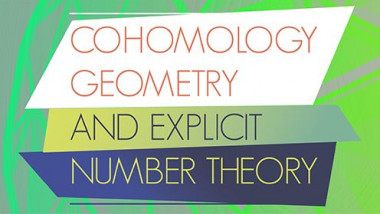Appears in collection : 1923-2023, Centenaire de René Thom
John Dalton’s law of multiple proportions of 1803 marks the beginnings of the modern atomic theory of matter, while Avogadro introduced in 1811 the idea of the molecule as a composite of “atoms-in-molecules” that behaves collectively as the fundamental unit of a given chemical compound. Half a century later, by mid (and second half) of the nineteenth century, chemists like Kekulé, Couper, Loschmidt, and others began what has become the chemical tradition of “drawing” chemical diagrams by connecting atomic symbols by lines introducing the first “chemical graphs” to be used as predictive tool of chemical properties and reactivity. The topology of a given collection of interacting atoms, a chemical compound, is all the difference between, say, acetic acid (the acid constituent of vinegar), oxiranol (an intermediate in interstellar chemistry), and the toxic refrigerant methyl formate! All three are composed of 2 carbon atoms, 4 hydrogens, and two oxygen atoms, but what a difference topology can make!
Later, early in the 20th century, Gilbert Newton Lewis introduced the concept of the shared electron pair as being the physical mechanism of this “chemical bonding”. However, and up to the sixties of the last century, never has anyone ever seen a line connecting any atoms in space. That line connecting atoms in real three-dimensional space, the network of bonds connecting atomic symbols, has remained a mere summary of experimental experience until Richard F. W. Bader came along with a theory now termed the Quantum Theory of Atoms in Molecules (or QTAIM for short).
QTAIM starts from the electron density of molecules, complexes, and crystals, and analyzes the three-dimensional topography of this scalar field. In doing that, Bader came up with a theory of chemical structure and its structural stability [1] based, in some of its core concepts, on René Thom’s Catastrophe Theory [2]. Bader discovered what is known as the “bond path” which is a line of maximal electron density connecting the nuclei of atoms that are known to be chemically bonded. In the grand majority of cases, the bond paths topology maps perfectly the bonded structure deduced from experimental chemistry – but with some exceptions and those exceptions can be among the most interesting cases. The bond paths network provides a rigorous and unambiguous definition of a “chemical structure” and the catastrophe points where there is a change in the topology (and hence change in chemical structure). (The word “structure” is used carefully and not to be confused with “geometry” as it is often done in the literature). These ideas let to the development of an entire quantum mechanics of open electronic systems, that is of atoms-in-molecules. Since the electron density is an experimental observable and beginning in the eighties with the advent of modern detectors, faster computers, low-temperature crystallographic experiments, and bright X-ray sources – the environment was set to go beyond the spherical approximation in refining X-ray diffraction data to the aspherical (multipolar) refinement. That has resulted in that, now, bond paths are routinely observed experimentally – what has remained an abstract summary of experiment up to these developments. Experiment and theory have been brought together by QTAIM through the definition of chemical structure and structural stability in the precise language of René Thom’s Catastrophe Theory.
[1] Bader, R. F. W. Atoms in Molecules: A Quantum Theory. Oxford, U.K.: Oxford University Press; 1990.
[2] Thom, R. Structural Stability and Morphogenesis: An Outline of a General Theory of Models (English Translation). Massachusetts: Adison-Wesley Publishing Company; 1972.















